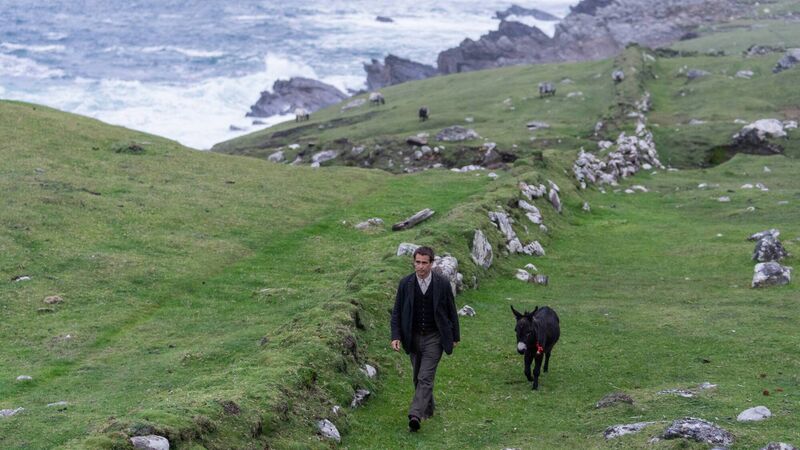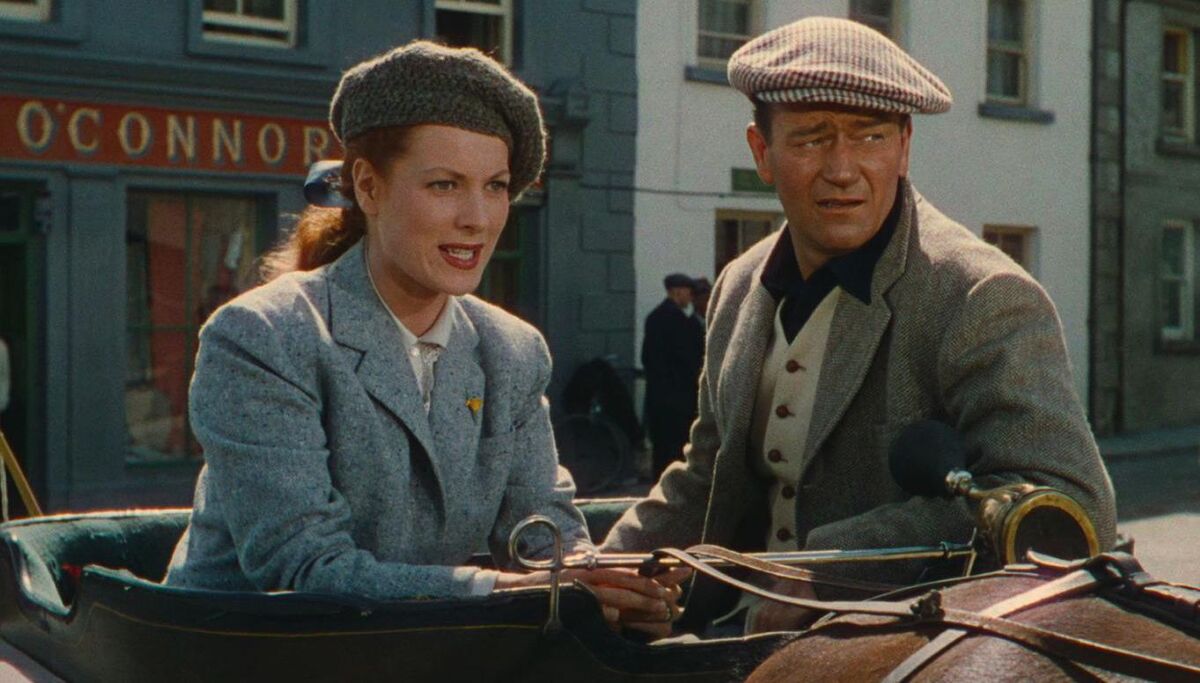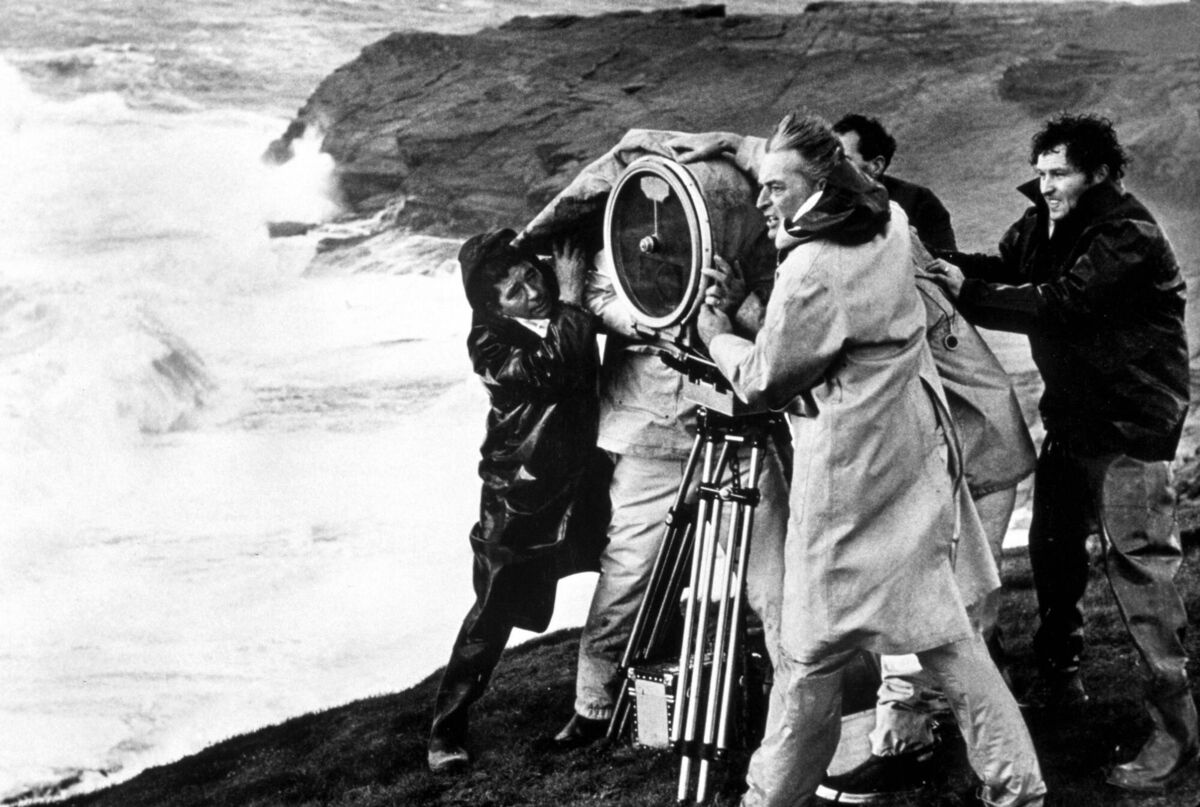Lights, camera, Ireland: The film locations that are a box office hit for Irish tourism

Colin Farrell and Jenny the donkey in The Banshees of Inisherin. The backdrops have generated huge interest for the Aran Islands. Picture: Jonathan Hession
As the Aran Islands brace for waves of interest across the world due to the burgeoning success of Martin McDonagh’s , it is worth remembering the decades-long impact that has had on the tourism industry[.url].

American tourists, among the most coveted among tourism industry folk for their high-spending ways, will still flock to the likes of Cong in Co Mayo to see where Hollywood royalty were directed by legendary filmmaker John Ford in the summer of 1951.
film locations became an industry for the local population for the past 70 years, grateful to the thousands of visitors who have arrived in Galway and Mayo in the decades since.
A museum, tours, and accommodation based around the Academy award-winning film are among the attractions still benefiting from the association with the silver screen’s leading lights of the day.
The power of both small and big screen when it comes to Irish tourism cannot be underestimated, according to industry figures.
Cork native John Fitzgerald of Wild Way Private/Chauffeur Tours said the interest in various locations around the country due to film and television is perpetually powerful.
“For Cong and the surrounding areas, has been a massive boon to the local economy. The same goes for and its impact on Dingle, and Curracloe in Wexford, while has had a massive impact on tourism in the North over the past decade,” he said.
“I still have visitors asking about and the locations used in Dingle. That was made 53 years ago. Film and television have an enduring impact on tourism, especially with repeat showings of the films and programmes, and the Aran Islands will surely be the next to see a wave of visitors.”
, a 1970 Academy award-winning film starring leading Hollywood icon Robert Mitchum and Sarah Miles, was filmed mostly around the Dingle Peninsula.
The Kerry coastline and islands would be further explored in 2014 as a film location when the crew visited Skellig Michael for some of the most crucial scenes for the seventh film in the Luke Skywalker saga.
With more than 10,000 visitors annually, the Office of Public Works (OPW) has had to scale back the numbers allowed on the Unesco World Heritage site on any given day. The interest in the locations shows no sign of abating.
Irish Tourism Industry Confederation chief executive Eoghan O’Mara Walsh said screen tourism sells the country to a global audience in a way that goes beyond even advertising and marketing.
“ is still very popular after all these years with the likes of the French market. The images of Skellig Michael to the world have had a huge impact. Tourism Ireland has been very, very clever in leveraging that,” he said.
"The backdrops have generated huge interest for the Aran Islands, and rightly so.
“If the impact of is still being felt after 50 years, that tells you all you need to know. It is that marriage of culture and tourism that people are attracted to, and the west coast of Ireland especially has done very well. Long may it continue,” O’Mara Walsh said.

The historic Good Friday Agreement of 1998 not only brought a lasting peace, but it also paved the way for a television and film industry that would see thousands of eager fantasy genre fans flock to the North.
Ask any visitor to Belfast, and they will invariably report back that the Titanic experience is now sharing centre stage with . Its presence is everywhere.
The data backs up the anecdotal evidence.
According to Tourism Northern Ireland, , which became must-see appointment television for its seven seasons, has revolutionised the industry in the North after becoming one of its main filming locations throughout its multi-award-winning run.
“Northern Ireland hosted many film and television productions, but it was that turned us into a leading screen tourism destination. It brought many more visitors and fans to explore our stunning landscapes and coastlines than any other production. The economic benefits of screen tourism are undisputed,” the tourism body said.
“In 2018, the show played a part in attracting one in every six out-of-state visitors. That accounted for 350,000 visitors and over £50m for the local economy. The tourism opportunities grew alongside the viewing figures as each season passed. Very quickly, became Northern Ireland screen tourism’s most valuable asset.”
Tourism Northern Ireland chief executive John McGrillen said in 2018 the show’s impact led to more than €250m being spent in the local economy from tourism.
All-island co-operation with Tourism Ireland, coupled with a good relationship with the HBO television channel and producers, was crucial to maximising the success.
“With filming taking place across Northern Ireland, it is not unusual to see daily coach tours and individuals stop off at some of our most scenic locations as well as many of our lesser-known beauty spots,” the tourism body said.
"Recognising the endless appetite for the series, Tourism NI has worked closely with HBO and Northern Ireland Screen to engage with the fans.

“We have created bespoke interpretive panels, a filming locations app as well as a collection of visitor guides showcasing the spectacular filming locations, the 10 intricately crafted Doors of Thrones, the now famous Game of Thrones Tapestry and the six beautiful stained glass window installations, the Glass of Thrones.
“Our close association with the show and joint initiatives means that we are internationally recognised as territory, a place where a now thriving screen tourism sector enjoys top billing alongside a booming film and TV production industry,” it added.
Last autumn, Tourism Ireland, in conjunction with Searchlight Pictures, created a short, behind-the-scenes featurette using footage shot during filming for .
It features director, writer and producer Martin McDonagh, as well as actors Colin Farrell (who plays Pádraic), Brendan Gleeson (Colm), Kerry Condon (Siobhán), and Barry Keoghan (Dominic), who describe and praise the special locations chosen for filming, Tourism Ireland said.
The impact has been staggering.
The video has had 10.6m views to date — 5.8m in Britain and the US, 1.4m in Australia, and 3.4m in France.
A spokesperson for Tourism Ireland said: “We know that the emotional power of film and TV has the ability to drive visitors to a destination. In Tourism Ireland’s Red C brand research last year, film and TV were mentioned as a key factor in attracting a consumer’s interest in a destination.
“We have anecdotal evidence from , , , , , etc that fans visit locations because of the production in Ireland.
The tourism body wants more of the same.
“Tourism Ireland is very committed to screen tourism,” the spokesperson added.
“We proactively seek to work in partnership with productions filmed on location in Ireland.
“We have a dedicated team in Dublin who build these relationships and negotiate our partnerships with screen project owners. This has led to multiple global campaigns rolled out by our teams around the world.”
Financial support and tax incentives have been crucial for television and film production firms.
“By showcasing our breathtaking landscapes, dynamic cities and unparalleled culture, the sector plays an important role in complementing the tourism industry, which has been particularly negatively impacted this past year,” the joint managing director of Element Pictures and chairman of IBEC Audiovisual Ireland Andrew Lowe said.
According to a report from PwC on the Section 481 Film Tax Credit from 2021, commissioned by Ardmore Studios and Troy Studios with the support of Animation Ireland and Screen Producers Ireland, major investment is still in train.

This investment flows not just to our big urban centres but right across the country, where they support and sustain local and regional economies.
“The Government’s progressive film tax measure, high-quality studio and stage facilities, a strong talent and skill pool is key to the continued success, but the film tax credit is a key cornerstone of Ireland’s screen industry and a critical pillar of the financing structure of the industry,” the PwC report said.
“Ireland’s film tax credit allows Ireland to compete for international investment in a market where numerous countries offer a range of similar international financial incentives.
“With 124 productions applying for a total of €111m film tax credit in 2019, and a total economic impact of €416.9m, the Irish economy receives a positive 3.8:1 return on the film tax credit investment. Production activity payroll related taxes also contributed approximately €52.2m to the exchequer.
“Combining the exchequer contribution with the Total Economic Impact, the 124 2019 productions generated a Total Economic Contribution of €469.1m,” it added.
There are more slices of a big film and television pie to be won, as streaming and other mediums grow, according to managing director of Ardmore and Troy Studios Elaine Geraghty.
“There is huge potential in developing films for TV, particularly for subscription video on demand platforms,” said Ms Geraghty.
“They have a huge need to fill demand for TV drama series and TV films and Ireland is well placed to provide this content,” she added.










